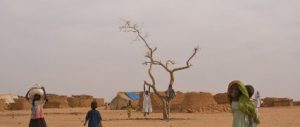As in much of the world, the current security discourse in Asia and Australasia is dominated by what might be called the “control paradigm”, based on the premise that insecurity can be controlled through military force or balance of power politics and containment. The most obvious global example is the so-called “war on terror”, which aims to “keep the lid” on terrorism, without addressing the root causes.
Such approaches to national, regional and international security are flawed -– particularly if not complemented by diplomatic efforts — and are distracting the world’s politicians from developing sustainable solutions to non-traditional threats.
There is an alternative approach, that of “sustainable security”. The central premise of sustainable security is that you cannot control all the consequences of insecurity, but must work to resolve the causes: “fighting the symptoms” will not work, so policies must instead “cure the disease” through an integrated analysis of security threats and a preventative approach to responses.
Sustainable security focuses on the interconnected, long-term drivers of insecurity, including:
* Climate change — loss of infrastructure, resource scarcity and the mass displacement of peoples;
* Competition over resources, including food, water and energy;
* Marginalisation of the majority world — the political, economic and cultural marginalisation of the vast majority of the world’s population.
* Global militarisation — the increased use of military force
Asia is a region in transition, and transition creates uncertainty. The political, economic and societal landscape is shifting and, at the same time, climate change and other long-term emerging threats to security will require regional responses. All of these trends are present in the Asian security dynamic.
The sustainable security analysis makes a distinction between these trends and other security threats (for example, terrorism or organised crime). It promotes a comprehensive, systemic approach, taking into account the interaction of different trends which are generally analysed in isolation by others. It also places particular attention on how the current behaviour of international actors and western governments is contributing to, rather than reducing, insecurity.
Sustainable security takes global justice and equity as the key requirements of any sustainable response, together with progress towards reform of the global systems of trade, aid and debt relief; a rapid move away from carbon-based economies; substantial steps towards nuclear disarmament and the control of biological and chemical weapons; and a shift in defence spending to the non-military elements of security. This links long-term global drivers to the immediate security pre-occupations of ordinary people.
Sustainable security is inherently preventative in that it addresses the likely causes of conflict and instability before the ill-effects are felt. It builds on elements of previous attempts to reframe thinking on security to include the concepts of common, comprehensive, human, just and non-traditional security. Many of these approaches have long been recognised in Asia, though national security policies continue to be dominated by the “control paradigm”.
While there are many immediate security concerns in the region, there are three principal drivers of insecurity over the medium- to long-term: maintaining state integrity, particularly against internal instability; a regional power shift; and environmental and humanitarian disasters. The economic downturn of recent months may aggravate some of these sources of insecurity, since economic growth in Asia has been a major factor in mitigating conflict.
While the United States may remain the ultimate guarantor of security for many for some time, it is undeniable that it is experiencing a relative decline in economic and military power and is heavily bogged down in Iraq and Afghanistan. The exact implications of waning US influence in the region are not yet clear, but the shifting power dynamic is itself a potential source of uncertainty and instability.
Among the most serious challenges facing Asia are the numerous environmental and humanitarian disasters to affect the region. In the last few years, there have been three major environmental disasters in Asia: the December 2004 Indian Ocean earthquake and resulting tsunami which devastated costal regions in Indonesia, Sri Lanka, India and Thailand; the catastrophic Cyclone Nargis in Burma in May 2008; and, in the same month, the terrible earthquake and aftershocks that hit Sichuan province in China.
These three disasters alone caused nearly half a million deaths, with massive destruction to property and infrastructure. But, in addition, the region is hit by many smaller tropical storms, earthquakes, landslides and floods every year, each one killing hundreds and displacing many tens of thousands.
Events such as these place massive demands on governments, threatening internal stability and potentially displacing peoples across borders, adding to pressure on neighbouring countries. They are often made worse by inadequate or slow responses, which can turn an environmental disaster into a humanitarian catastrophe. There has already been much comparison of the differing responses of the Chinese and Burmese governments in May 2008. The Chinese authorities were quick to put rescue plans into action and commit 130,000 troops to a massive relief effort. Had the Chinese government response not been so prompt and efficient, many more would have died.
In contrast, the Burmese junta failed to recognise the scale of the emergency, and, at first, refused to accept foreign aid. It is likely that this government failure caused further unnecessary deaths and suffering.
Such disasters may occur more frequently with climate change over the coming decades. The latest findings of the Intergovernmental Panel on Climate Change (IPCC) suggest that coastal areas will be hit by more frequent tropical storms and increased flooding, particularly the heavily populated megadelta regions in south, east and south-east Asia. They are also predicting a shift in rainfall patterns and a decrease in freshwater availability in most of Asia (particularly for those states dependent on Himalayan glacier melt water).
In addition, serious food and water security problems can be expected in Australia and New Zealand within the next twenty years. With Tuvalu and other Pacific islands set to disappear under rising sea levels and Bangladesh likely to lose a third of its land mass to flooding, perhaps the biggest problem for the region will be managing huge numbers of environmental refugees. New Zealand has agreed to accept the Tuvaluan population once the island becomes uninhabitable, but India has accelerated the building of a 2,500-mile [4,000-kilometre] security fence along its border with Bangladesh. The problem of environmental refugees will hit Asia hard and regional responses should be developed with some urgency.
Many of the drivers of insecurity outlined above can be addressed and mechanisms put in place to resolve the long-term causes, but there are impediments. These include the regional focus on sovereignty, the lack of inclusive and effective regional security architecture and the absence of a powerful, neutral country to take the lead.
Many of the post-colonial countries in the region are understandably reluctant to compromise their own sovereignty in any way, even if this creates difficulties in addressing pan-regional issues. Often national security takes precedence over regional stability and global security. Furthermore, there are still many unresolved historical grievances that make cooperation difficult and feed unhelpful political rhetoric.
Co-operation is made more difficult by the lack of an inclusive regional security architecture with the strength to implement a new security agenda. Asian integration and intra-regional cooperation would surely help to address the long-term drivers of insecurity in the region. The Association of South-East Asian Nations (ASEAN) does encourage such regional communication and has been successful in many respects, but its makeup is perhaps too localised to have any wider impact (despite the ASEAN Regional Forum, ASEAN Security Community and ASEAN+3 processes). This lack of effective security architecture means that policy responses will continue to be formed at national level, even though regional cooperation is vital to address these sustainably.
If the blockages to change were addressed, mechanisms could be developed to prevent the growth of insecurity and conflict in the longer term. Specific initiatives could include:
*Climate change: Countries in the region that are not signatories to the Kyoto Protocol need to recognise that they too have a responsibility to stabilise then cut their greenhouse gas emissions and accept that economic development cannot come at the expense of social and environmental stability. The United States and other developed countries must negotiate a fair post-Kyoto agreement that includes radically reducing their own emissions.
* Regional architecture: International institutions such as the United Nations and European Union, and other influential players both within and outside the region, should support the development of a strong, inclusive regional security architecture.
*Power shift: President Barack Obama’s new administration should accept the rise of China and move from balance-of-power politics to policies of engagement and trust-building, particularly in the areas of trade, environmental protection and regional security.
*Taking the initiative: Given the lack of one powerful, respected and neutral country, Asian civil society organisations might draw together an independent, high-level panel of respected individuals, including security experts and elder statesmen, to promote a sustainable security framework for Asia and Australasia, with a particular focus on preventative diplomacy and educating publics and governments on the seriousness of the threats the region faces.
Over the next five to ten years, a radical shift towards sustainable approaches to security will be hugely important. If there is no change in thinking, security policies will continue to be based on the mistaken assumption that environmental problems can be marginalised. A change in thinking could lead to an era of substantial progress in developing a socially just and environmentally sustainable regional order for Asia and Australasia.
Chris Abbott is the deputy director of Oxford Research Group (ORG).
Sophie Marsden is an ORG research assistant.
This article is an edited version of the report Tigers and Dragons: Sustainable Security in Asia and Australasia, published by the Oxford Research Group (ORG) and the Singapore Institute of International Affairs (SIIA), following a consultation that ORG and SIIA held in Singapore in September 2008.
Homepage photo by uncultured



